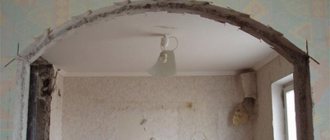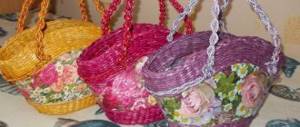A master class on decoupage furniture in the Provence style will help you create comfort in your own kitchen or dacha. Appearing several centuries ago, this technique remains popular to this day. This is a wonderful opportunity to refresh the appearance of old furniture, decorate household items and stylize them to suit any style you like. One of the most famous and elegant is Provence. This decor is suitable not only for apartments, but will also perfectly decorate any loft.
Decoupage technique
Using the decoupage technique, you can transform completely different objects, age them and decorate them in a style typical of the countryside. The stamp of time is visible on them and they create a special atmosphere.
Decor features
This type of decoration has its own characteristics. When decorating things using the decoupage technique, you should consider the following points:
- The design of the product is made by applying a pattern to it that has a thin base, which can be fabric or paper.
- A plain painted surface is selected for the background.
- The base should be very smooth and even. There should be no roughness or scratches on it.
- The pattern is fixed with glue, which must be applied to a dry product.
- The last step is applying varnish.
In reality, a drawing is glued onto an object.
It is very convenient to use multi-layer napkins. They are thin and soft and are sold in a wide range. Their advantage is that you can hide the border between the edges.
It is recommended to use PVA glue. It can be diluted. A flat brush is suitable for applying glue. Of the varnishes, acrylic is the most suitable, since it is transparent and does not dry for very long.
Jug
Let's try to decoupage a metal jug in the Provence style.
Working with this type of surface is difficult, so we do not recommend that beginners take on the job.
However, if you follow the requirements, you will get a beautiful product that will please the eye:
- wash the jug thoroughly using detergent;
- level the surface, remove rust;
- Dry the vessel thoroughly and wipe with alcohol to degrease. This will allow the pattern to better adhere to the slippery surface;
- To create an aging effect, use bitumen varnish. Wait at least half an hour for drying;
- Use a cloth soaked in solvent to wipe the areas where you want to apply the design;
- apply decoupage glue;
- Apply the cut out design and smooth it thoroughly. Make sure that it remains in the originally planned place;
- Apply many layers of moisture-resistant varnish. Each one must be thoroughly dried.
This technique is used for decoupage of any metal surfaces - trays, buckets. If the products serve not only a decorative, but also an economic purpose, it is necessary to secure the design well with several layers of varnish.
Master class on furniture
Usually, non-bulky items are decoupaged in order to create coziness in the kitchen or dining room. Most often they take a shelf, table or chair. But the most popular is the chest of drawers. There is always a place for such an item in the bedroom or kitchen.
You need to start by preparing applications. Measure the dimensions of all walls and drawers. Transfer measurements onto paper. In this case, it is better to use wallpaper. Cut out the required stripes, paying attention to the position of the pattern.
Apply the primer to the boxes in several layers, allowing each of them to dry thoroughly. Then glue the strips of paper to the drawers, smoothing them so that no air bubbles remain. Cover with glue. After drying, paint with acrylic paint. You can tape the perimeter with masking tape.
When the paint is dry, sand the tabletop and side walls. After this, wipe well with a rag and cover with matte aqualak.
What do we need?
To make a wall clock in Provence style, we will need:
- Watch base. It is advisable to choose a wooden base, but you can use any other convenient material.
- Acrylic varnish for surface coating.
- Sandpaper to remove roughness.
- A drawing, photo or any image printed on paper that will be pasted onto the base.
- Paint to match the color of the image.
- Glue (PVA and superglue).
- Decoration elements (ribbons, beads, herbarium, etc.).
- Clockwork.
Armed with everything we need, let's get to work.
Provencal style watch
A master class on decoupage of a clock in the Provence style is in great demand , since this is a useful item and is found in every home. The main thing is that the mechanism is working. Old watches are perfect, even those with defects, chips or scratches. This will give a unique charm to the product. Old things don't have a perfect surface.
The watch mold is treated with sandpaper. It is better to replace the primer with dark acrylic paint, which should be applied to the entire surface using a flat brush or sponge. Dry well. Rub the edges and places where there will be abrasions with a candle. Coat in places with one-step craquelure varnish and dry.
DIY Provence style kitchen decor
293
Creating decorative items for a kitchen in the Provence style is a very exciting activity. In addition, there are never too many accessories here, so you can freely add new items to your collection.
Provence style, cozy and even somewhat naive, is now chosen by many to decorate their kitchen. But how to turn a set of wooden furniture against a background of rough finishes into such a cute and warm interior? Of course, with the help of accessories and decorative items. However, only natural materials and handmade must be present here. Despite the fact that you will need a lot of different trinkets to create a real Provence, buying them will definitely cost a pretty penny. But you can save a lot of money and do everything yourself.
We age furniture
If you were unable to find a kitchen set in the Provence style made of artificially aged wood or simply did not have enough money for such a purchase, you can bring a set of cabinets to the desired level of wear on your own. To do this you will need paint (certainly light, muted tones) and sandpaper. Next, we apply any decorative technique we like:
- Paint the furniture with tinted acrylic, and after drying, cover it with another layer, but this time in white. After a couple of days, it’s easy to go over all the protrusions and corners with sandpaper - and your set will acquire the desired degree of wear.
- Lacquered furniture in the kitchen should first be sanded and a layer of paraffin applied to its surface. After painting it in the desired color, we again wipe off all protruding elements with a regular sponge - we get the same decor with an antique effect.
- Here you will already need metal wool from a hardware store. The prepared furniture surfaces must be painted and then rubbed along the wood grain with the finest steel wire. After this treatment, the set will need to be cleaned with a damp sponge.
You can also use decorative varnishes with a craquelure effect to age your furniture yourself and give it a “provincial” style. And in order for the set to fit organically into the interior of a Provence kitchen, it is decorated with paintings or drawings taken from decoupage cards.
Touching curtains made of lightweight floral fabric, hand-embroidered or crocheted, would also be useful. But such decor needs to be applied in doses: it is best to limit yourself to decorating the glazed facades of the top row of cabinets. Mini-curtains are hung on rails or thick fishing line - for each door there are two curtains with or without tiebacks. You can also hang the bottom row of cabinets, but in this case it is better to use patchwork curtains for decoration using the patchwork technique.
Arranging the plates
Such cute and cozy decorative items will look great on the open shelves of a Provence style kitchen. They are often brought back from travel, purchased at some seasonal fair or even at a flea market. But you can make decorative plates with your own hands. There are also plenty of ways to do this:
- Papier mache . Surely in school, during labor lessons, you made such plates, covering the dishes layer by layer with finely torn newspapers. It's time to remember my childhood and make a few more copies. After dyeing and painting with floral designs, you will have a very stylish decorative item.
- Mosaic. Here you will have to work a little, making such an unusual accessory for the kitchen. Instead of smalt, you can take fragments of tiles or even painted eggshells, and then glue the mosaic pieces onto a plaster base. Old plates made of thick plastic are often used as a permanent template for such decor.
Ordinary transparent or white plates are also suitable for decorating the kitchen. Those with artistic talent will paint them themselves, while everyone else can again resort to decoupage napkins. When you have accumulated enough accessories, you can start hanging them on the walls, placing plates on shelves or in special forged holders.
If decorative items seem scarce, let regular floral dinner plates join their ranks. Over time, the collection will grow: you will master new techniques, and your friends will probably contribute by giving you a few more interesting items.
Making “provincial” watches
An integral attribute of a Provence style kitchen is an antique clock with a large and light dial. To make such decor, take as a basis an accessory with vintage numbers and curly arrows - there are many of these on sale now. However, for complete similarity and compliance with the general spirit of the interior, the modern model will require restyling. The recipe is the same: decoupage, applique, painting.
Let's focus on the first option. We will make a stylish decorative item with our own hands from scratch, since now in stores for handicrafts and creativity there are many templates specifically for decoupaging watches. The work order is as follows:
Prepare the dial. A sanded wooden round or flat white plastic plate will do (after drilling the central hole, it will need to be degreased).
- Paint the outline of the clock with acrylic. Choose the color of the decor in accordance with the main range of the kitchen, but light ash tones or brown shades look best in the Provence style.
- Choose a suitable decoupage card or napkin with a pastoral pattern, and tear it along the outline to make it easier to mask the edges.
- Place the picture evenly on the dial and gently smooth it with a brush moistened with diluted PVA.
- When the pattern is dry, mark the kitchen clock and stick on the decorative dial in the same way, cutting it out from the corresponding card. The finished watch can be coated with craquelure varnish if desired.
- Then all that remains is to disassemble the clock mechanism with the hands and replace the dial on it. We insert the batteries and hang the vintage chronometer on the wall.
Of course, these are not all decorative items and accessories in the Provence style that you can make with your own hands. In such a kitchen, flower pots with herbs, fruit baskets woven from wicker or even newspapers, patchwork covers and cushions on chairs are appropriate. Fantasize, try your hand at different types of creativity - and your kitchen will take on a cozy look in the style of the real French South.
via
Vase in Provence style
Decoupage in country style will help transform a vase and make it an extraordinary independent home decoration, and not just a container for flowers. A vase that looks decades old always looks expensive.
To do this, use the craquelure technique. After applying the paint, a design is added and secured with crack varnish. This procedure must be performed before the glue dries. When the varnish dries, the contours of the composition will look unusual. The final touch is the application of regular varnish. Such a vase will look impressive if you put dried lavender flowers or ears of wheat in it.
To get an excellent result, you must follow the work rules and perform all actions carefully, let the layers dry and treat the surface well with sandpaper. And the most inconspicuous thing will be transformed and will be able to please the owner’s eye for many years to come.
Stages of work and style features
To ensure that the product lasts as long as possible and looks the way you want, follow these steps:
- prepare the surface for work. Perform sanding and priming;
- paint the surface in the desired color;
- apply the selected image;
- varnish;
- use additional decorative methods;
- perform a final multi-layer varnish coating.
The most difficult step is drawing. There should be no bubbles, folds, or excess glue left. You need to be especially careful when applying the design to the glass.
The stages of work will be similar in all decoupage techniques, but in order to decoupage furniture in the Provence style, you need to be imbued with its spirit, understand what features it has and what techniques will make the thing unique.
Main features of the style:
- using exclusively pastel colors;
- motifs of delicate flowers, lavender, olives. Landscapes are welcome. Do-it-yourself painting will look amazing;
- aging effect (scuffs, peeling paint). You can use the spray effect, the dry brush method when processing surfaces;
- lace jewelry, knitted bed linen, forged figurines;
- An interesting technique for additional decoration is craquelure. It involves applying paint that creates the effect of small cracks through which the first layer of paint is visible.
Provence style is like a light breath of wind - relaxed, light, breathable.
Decoupage furniture in Provence style: master class
In order to decorate a chest of drawers or a cabinet in the Provence style with your own hands, you can use not only napkins and rice paper, but also light wallpaper .
To remodel the table, it is better to make do with napkins, decoupage cards or rice paper. In general, the sequence of actions when decoupaging large furniture does not differ from working with smaller objects, but there are several features.
Firstly , a large area of the surface to be decorated. To paint it, it is more convenient to use a wide flat bristle paint brush or a regular foam paint roller.
Secondly , furniture is usually already painted or varnished. If there is a varnish coating, it should be sanded down to the wood. If the furniture is painted, then it is enough to go over the surface with medium-grained sandpaper so that subsequent layers of paint adhere better to the base. After this, the surface is degreased with acetone or alcohol. Defects in the form of cracks, chips, and traces of woodworms are only to our advantage; they are not corrected.
Thirdly , aging massive things by glazing is not very convenient. Here another interesting and often used technique can help out - the “dry brush”.
The final stage. Decoration
We are almost finished with our Provence style wall clock. The photo should be bright due to the varnish and completely solid. Having made sure of this, let's proceed to completion.
- Let's take superglue and our decorating elements. Turn on your imagination! Glue beads, herbarium and other cute little things as you wish. Don't forget to paste the numbers. Let the work dry thoroughly.
- The last step is to insert the clock mechanism and start our clock. Ready!
Now you can hang our creation in the most prominent place in the room - such beauty should be in plain sight!











